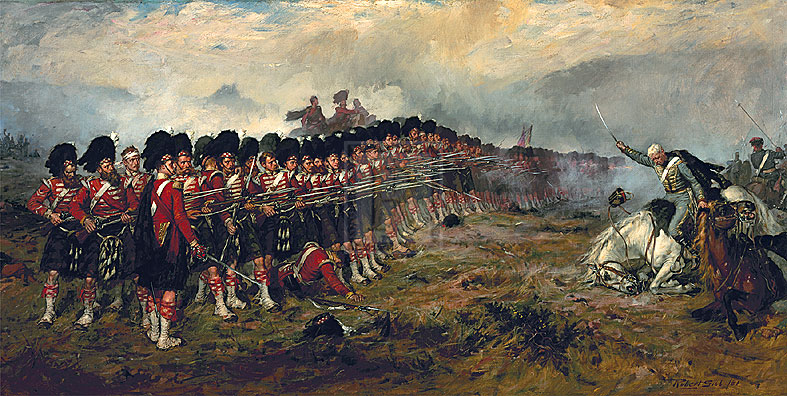
"The Thin Red Line"
Ref: ROS-EG293
by Robert Gibb
Paper Size: 38 x 20 ins
Image Size: 36 x 18 ins
Open Edition
The Thin Red Line by Robert Gibb depicts the famous heroic stand by the 93rd Sutherland Regiment at the Battle of Balaklava on October 25, 1854, during the Crimean War. Painted in 1881, the original painting forms part of the collection at the Argyll and Sutherland Highlanders Regimental Museum at Stirling Castle, Scotland. It is hailed as one of the finest military paintings of the nineteenth century and it is one of Gibbs finest works. The paintings title is taken from the eyewitness report by Sir William Howard Russell, The Times correspondent, who referring to the 93rd Regiment wrote that he could see nothing between the charging Russians and the British base at Balaklava but a "thin red streak tipped with a line of steel". Over time, the phrase became known as the thin red line and came to symbolise British sangfroid in battle. On the morning of the battle and displaying utter faith in the 93rd Regiment, Sir Colin Campbell ordered his troops to spread out into a line of defence only two men deep, which defyed usual convention of the time. Campbell is said to have told his men, "There is no retreat from here, men. You must die where you stand." John Scott, who was Campbells aide replied "Aye, Sir Colin. If needs be, we'll do that." The 93rd regiment was made to wait until the Russian troops were very close before they were instructed to fire the first line. As the Russians continued to advance, Campbell had his men wait until no more than 50 yards lay between the Highlanders and the charging Russians to fire the second round, thus breaking the Russian charge. Asked why he had been so unorthodox as to form a line instead of in a square. Sir Colin Campbell said; "I knew the 93rd, and I did not think it worth the trouble of forming a square."
Watermarks or Logos do not appear on actual prints
